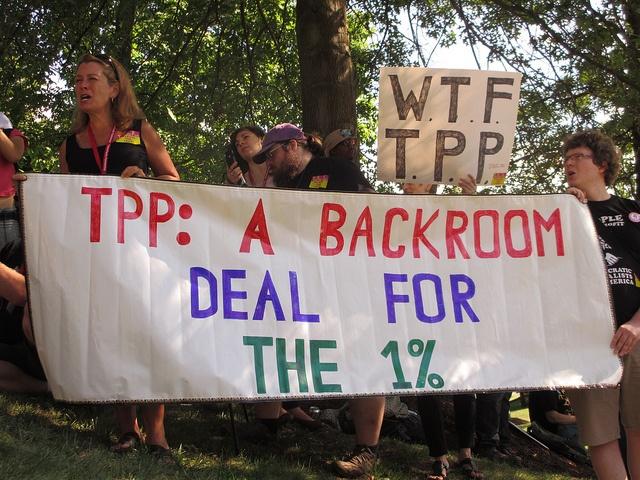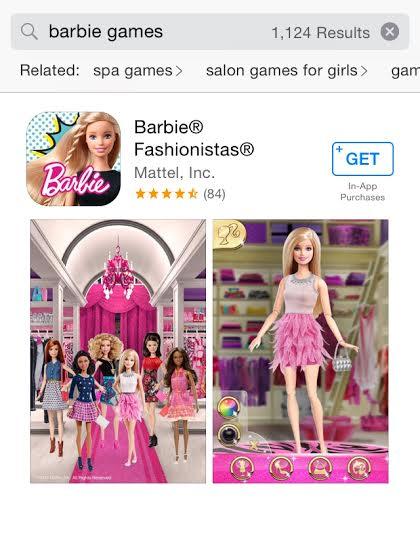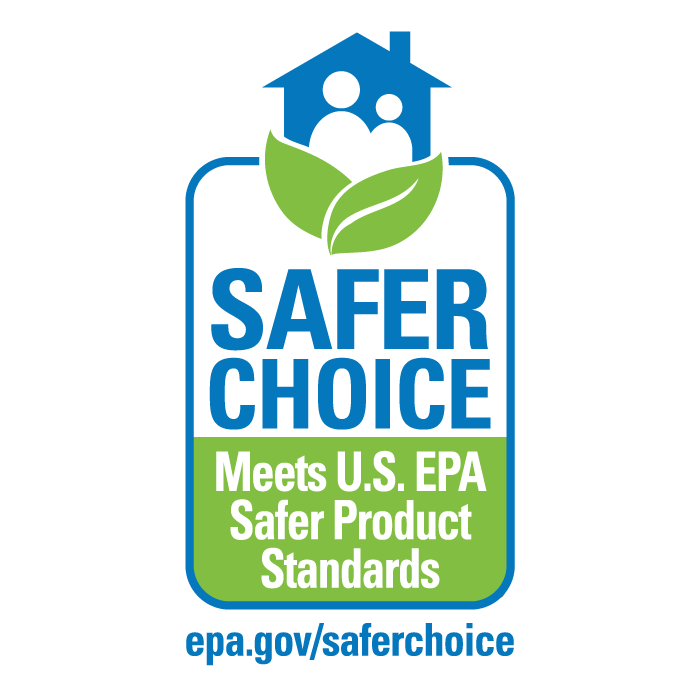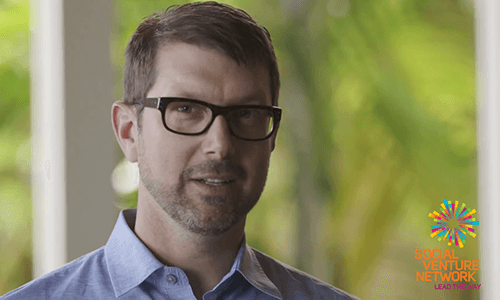And the National CSR Awards 2015 winners are....


Nine awards and two Special Recognitions were presented recently at the inaugural National CSR Awards with Marks and Spencer, Wyke Farms and Zurich Community Trust among the winners.
The 2015 winners are:
Best Education Project Award (Large Organisation)
Tesco – Eat Happy Project
Best Community / Education Development Award (SME Organisation)
BAM Construction in partnership with Manchester City Football Club – City Football Academy
Best Community Development Award (Large Organisation)
Zurich Community Trust in partnership with Age UK – Call in Time
Innovation for Workplace Practices Award
Chiswick Park – Chiswick Park – Enjoy-Work
Environmental Leadership Award
Wyke Farms – 100% Green
Individual Outstanding Leadership Award
Bill Eyres – Head of Sustainability (UK & Europe), O2
Individual Outstanding Leadership (for Innovation & Technology) Award
Alejandro Agag – CEO, Formula E
Overall Excellence in CSR
Marks and Spencer – Plan A (pictured above)
Special Judges Award for Community Innovation
Hackney, Islington and Tower Hamlets Councils – Zero Emissions Network
Special Judges Recognition for Community Partnership
Charities Aid Foundation in partnership with Legal & General – Social Enterprise Assist
Special Judges Recognition for Legacy
Marks and Spencer – Plan A
A full report will appear in the April issue of Ethical Performance.
Hugo Boss targeted over labour violations in Europe


Campaigners around Europe are targeting fashion label Hugo Boss over reported labour violations in factories in Turkey and Croatia.
The protests coincide with Hugo Boss' press and analysts’ conference in Metzingen where the company will announce its financial results.
About half of Hugo Boss clothes are made in factories in Europe and a report from campaigning organisation Clean Clothes Campaign (CCC) showed that there is a huge gap between the actual wages of garment workers and a living wage. Most workers earn below the poverty line. Moreover workers reported union busting, intimidation, no observance of overtime regulation and sexual harassment.
While some workers at a Turkish Hugo Boss supplier earned €326 on average including overtime and bonusses, CCC says that the national poverty threshold would be €401 and a minimum living wage would be €890.
Bettina Musiolek from Clean Clothes Campaign commented: "'Made in Europe“ should mean that workers escape from poverty and do not have to be afraid to join a union. But on the contrary: "Made in Europe“ creates poverty and prevents people from exercising their political freedoms. Hugo Boss can and should step up to put an end to these gross violations. A real BOSS pays a living wage."
Hugo Boss has refuted the allegations. It issued a statement saying: "Neither the statements regarding our company-owned production facility in Izmir correspond with the facts, nor is the information concerning the legal issues referring to former employees accurate.
"On the contrary. Both, the wages and the overtime hours in our production facility in Izmir are clearly outlined. Average wages are significantly above the customary local wages and the working environment in our facility is excellent. Accordingly, over 90 percent of our local employees confirmed in an anonymous survey that they are more than satisfied with the working environment and benefits provided.
"Aside from the provision of good salaries and extensive social benefits, there are also excellent training and career opportunities. Furthermore, our employees have access to canteens and numerous recreational and sports offers on site, which are all free of charge. For these reasons, Hugo Boss is one of the most attractive employers in the region of Izmir."
Picture credit: Hugo Boss
The Apparel Industry's Answer to Global Water Shortages


Smart water usage is at the heart of a sustainable fashion industry.
This isn’t a new realization; the fashion industry has always relied upon abundant amounts of water to produce the clothes and shoes we wear. That favorite T-shirt in your closet, the well-worn leather loafers under the bed and those cozy wool sweaters couldn’t have been produced without ample resources of H20.
In fact, both cotton and wool – two favorite natural fibers -- are insatiable water hogs. It takes more than 100 gallons to produce one single pound of raw cotton or shorn wool -- and that doesn’t include what is needed for rinsing and preparing the product, or washing and dying the fabric once the material is made.
But the real challenge today is ensuring there are enough water resources in the regions where the products are made. According to researchers at Growing Blue, more than 20 percent of the world’s commercial products are produced in water-scarce areas of the globe. That includes the clothes and shoes we wear, which increasingly are being made in developing countries like China, India, Bangladesh and Pakistan.
Minimizing water pollution
Companies like Nike, Gap, Levi Strauss, PVH, H&M and many smaller sustainable apparel companies have come to realize that the way we produce clothes has a direct impact not only on the world’s valuable clean water resources but on the apparel industry’s bottom line.
In 2011, as a result of a report published by Greenpeace detailing industrial water pollution problems in China, PVH, known for its Van Heusen and Calvin Klein brands, joined the Zero Discharge of Hazardous Chemicals (ZDHC) initiative and implemented its own action plan to eliminate toxic chemical pollution. The members of ZDHC developed a list of 11 restricted chemicals, along with advisories directed at minimizing or eradicating chemical pollution. They also set a goal to “remove harmful substances from textile production by 2020.”
Other organization members include Levis Strauss & Co., H&M, Marks & Spencer, Puma, United Colors of Benetton and Adidas, to name a few.
Reducing water impacts in drought areas
Levi Strauss is known for its innovative and inveterate brainstorming when it comes to conserving water. Its contributions have spanned from creating production methods that require less water, to challenging consumers to refrain from washing their jeans more than once every two weeks (or longer!). And of course, it’s the engineer behind the “Drop a Brick” crowdfunding project.
The nonprofit initiative, wacky as it sounds, is designed to save water where it counts – in the toilet – by displacing the water in the toilet reservoir with a sustainable “brick” that can help minimize the flushing of thousands of gallons of water. Needless to say, Levi Strauss, based in California -- one of the most drought-impacted states in the country -- has done a lot of thinking about water conservation strategies. While displacing water in the household toilet may not sound like it has much to do with the apparel industry, it’s an example of how companies faced with everyday water challenges are helping to inspire a change in mindset for consumers as well.
Waterless dye process breakthroughs
The fabric dye process is an intrinsic step in clothes and footwear production. Unfortunately, it is also one of the most polluting stages. The rinse water from millions of pounds of dyed fabric ends up going into drainage and sewage systems, where it makes its way into public rivers, lakes and other water sources.
Fortunately, several companies are on the cusp of solving this problem by creating water- and chemical-free dying processes.
Nike recently announced its ColorDry process, which uses super-charged liquid CO2 to force the dye into the fabric. According to Nike, there are no residue inks or chemicals to get dumped into the environment. The only residue is used CO2 that is separated from leftover dye, which is then isolated in the separator.
The environmental benefits, says Nike, are substantial. Almost all of the dye is used in the process, which reduces the chance of environmental pollution from waste products. It uses less energy as well – reportedly 63 percent less. And it has a smaller physical footprint, which means the process can be done more economically than traditional dyeing, which requires more manpower, larger facilities and increased overhead.
Apparel Made 4 You, based in Rancho Cucamonga, California, has come up with its own waterless technology, which it calls Active Tunnel Infusion. Rather than shooting super-heated CO2 into the fabric to embed the dye, the ATI uses photons and thermal energy to transfer an image from a template onto the fabric. The process, says AM4U, takes about 30 seconds for a piece of fabric big enough to make a shirt.
Like the ColorDry process, the patent-pending ATI system is said to have numerous environmental benefits that go beyond its waterless application. The machine fits in a room about the size of most bedrooms and requires a fraction of the manpower that conventional dye processes need. Thus it also takes less overhead to operate. The process doesn’t rely on aerial spray methods, so the air pollution is minimized.
Both of these waterless methods boast better color penetration and resiliency than conventional methods. This means the product will maintain its color and, in some cases, usability for a longer period of time – an added benefit for companies looking to improve production results and brand recognition.
New materials, improved recycling methods
One of the most enduring advances the fashion industry has made recently is the development of new, sustainable materials. Levi Strauss pioneered the use of PET bottles in its jeans to increase their durability and lifecycle. The concept of recycled plastic has spun off other industry initiatives as well, like Eco-fi (formerly known as EcoSpun), a company that breaks down recyclable plastic and spins it into usable fibers that can then be sold and mixed with other fibers, including wool and cotton. Recycling the fibers means less water used to grow and prepare new materials, and mixing materials can also mean longer-lasting products.
Just the same, most clothes and footwear eventually fall out of use or fashion with their owner. In earlier days, that often meant dumping it in the landfill. In addition to the negative burdens of landfills on the environment, all that clothing needs to be replaced. That means more energy, manpower and – you guessed it – water resources.
As a result, many apparel companies are realizing that offering consumers a way to recycle their pre-loved apparel will not only keep waste out of the garbage dump, but also decrease the demand for more water in the production cycle.
Patagonia, H&M and a growing number of other companies have developed innovative ways to encourage consumers to bring in their old duds. They range from coupons that offer a small bulk discount on in-store products to an exchange rack where consumers can leave their used item and pick up a “new” one. And they all, to some degree or another, benefit the consumer, the company and the environment.
The realization that companies can change consumer behavior is a powerful concept and just as transformational to the industry’s future as the technology it is developing to improve production methods. As the fashion industry is now discovering, economic profitability is as dependent on instilling and encouraging good environmental habits in consumers as it is in streamlining production methods. With a new mindset comes better water conservation, an increasingly important benchmark for today’s sustainable fashion industry.
Image: Tibetan woman preparing wool: Sukanto Debnath
Study Proposes Massive Urban Agriculture Complex in Los Angeles


The Los Angeles River has undergone a renaissance in recent years. After decades of periodic flooding, levees and other flood plain improvements turned the tributary into little more than a squalid, concrete afterthought. But over time the city has focused attention on this gem, as wildlife began to thrive and new bike paths offered great routes for bicycling to escape LA’s crowded streets.
Now a recently completed study proposes that an area hugging the river in northeast Los Angeles could turn what is now described as a “food desert” into a food production area. In the future, water from the Los Angeles River could finally help cultivate food instead of being dumped elsewhere in the city.
The global architecture and design firm Perkins + Will released an urban agriculture plan that suggests a 660-acre area near Dodger Stadium, straddling the neighborhoods of Chinatown, Mount Washington and Lincoln Heights, could be revitalized with investments in urban agriculture and food companies. This study complements the city of Los Angeles’ plan for the region, or CASP (Cornfield Arroyo Seco Specific Plan), which seeks to redevelop the area as a mixed-used development for a 21st century LA. In sum, that means an area that's transit-dependent, pedestrian friendly and free of parking requirements. Now, Perkins + Will insists urban farming can be added to the mix.
The base of such an agriculture hub would be the buildings that remain from the area’s industrial pass. Abandoned or underused lots, rooftops, and community gardens are among the spaces Perkins + Will believes could be devoted to growing food. And, according to this study, the possibilities are numerous: insect farming, aquaculture, fungiculture, small animal husbandry, beekeeping and even ranching would be possible in this historic and now rapidly changing area.
The new face of northeast Los Angeles?
Long an afterthought in a city known more for the beach communities, Westwood, Hollywood and now Silver Lake and even the San Fernando Valley, this understated section of LA has a history of farming. And many of its residents already grow food in their yards or balconies — and therefore it's really the “last frontier” of LA.
But Mount Washington, Lincoln Heights and surrounding areas of LA also pose opportunities for urban agriculture because of their location. The neighborhoods there are close to downtown Los Angeles and its public produce and flower markets. The area is linked by rail and, of course, the dreaded Interstate Highway 5 and Interstate 10. The local infrastructure, however, needs a lot of work. One of the oldest areas of the city, this section’s roads are in pitiful shape, and its location between downtown and outlying cities such as Pasadena means city streets, especially old Avenue 19, are often clogged with traffic as commuters try to avoid the major highways.
Traffic is not the only concern that needs to be addressed before turning this area into a modern agriculture center. The Los Angeles River poses problems as well as opportunities: This waterway receives and channels copious amounts of water, but most of it is from storm drains and would need to be treated before it's used to help cultivate food. The fact that the heavy industries that once operated in the neighborhood could have contaminated the soil is also a concern.
And while food stores are severely lacking in this area, so too are countless other services. Residents living within the area often drive up to 10 miles for children’s sporting events, playgrounds or even park space to enjoy a picnic — and those who have called this place home may have other ideas on how they want their neighborhoods transformed.
To the report’s credit, the authors address these issues front and center in the study. And in the end, jobs could grab locals’ attention. Most big urban projects result in temporary jobs such as construction or work such as retail. An integrated agriculture and food industry would mean long-term, decent-paying jobs.
But will it ever happen?
Trying to accomplish any major project in Los Angeles is a headache. The city’s position of mayor is, by design, a weak one -- with city council members and government agency heads often treating their districts as fiefdoms. They, in turn, must deal with a board of supervisors, the five members of which overlook a constituency much larger than the average U.S. congressional district’s population. But the city’s current mayor, Eric Garcetti, is known for supporting innovative ideas such as this urban agriculture proposal. City council member Gil Cedillo, whose district includes the CASP area, is pushing for community gardens within local schools.
Most urban agriculture plans are one-off projects scattered around cities, but Perkins + Will is on to something. Add the fact that commercial kitchens are starting to open in this section of town, and the idea of Los Angeles becoming an urban farming locus could actually move from artists’ renderings into reality.
Image credit: Perkins + Will
Based in Fresno, California, Leon Kaye is a business writer and strategic communications specialist. He has also been featured in The Guardian, Clean Technica, Sustainable Brands, Earth911, Inhabitat, Architect Magazine and Wired.com. When he has time, he shares his thoughts on his own site, GreenGoPost.com. Follow him on Twitter and Instagram.
Policy Points: Net Neutrality, Sick Leave and Better Trade


By Richard Eidlin
Voluntary corporate sustainability initiatives and social enterprises are essential but are not game-changers by themselves. In addition, we need laws and regulations that guide our economy toward sound, long-term decision-making, with full recognition of social and environmental externalities. As business leaders, we can and must support policy changes to help make the economy more sustainable.
A sustainable economy will depend on policies that will help advance change on a societal level. Here are three important policies that will help – and specific actions you can take.
1. Preserve net neutrality
Small- and mid-sized businesses got a major win last month, when the Federal Communications Commission voted 3-2 to approve new net neutrality regulations that would regulate Internet Service Providers (ISPs) under Title II of the Communications Act. If it survives challenges in court, it means that ISPs must treat all Web traffic the same and not be allowed to charge more for faster service. A previous FCC rule would have allowed a two-tier system; more than 4 million comments were submitted, including many business comments.
Unfortunately, even with the FCC’s rule, the debate isn’t over yet. The new rules are expected to be challenged in court, and the potential remains for Congress to try and block their implementation.
What’s At Stake
A level playing field for Internet speeds will ensure that innovative entrepreneurs will have a fairer chance to succeed in competition against entrenched, scaled companies that can more easily pay for faster loading speeds.
What You Can Do
Businesses have an important role to play by showing their support for strong net neutrality rules and encouraging Congress to let these rules stand.
2. Support earned sick days
Last month, we wrote about the importance of paid leave for the American economy. As we mentioned, there are a couple of ways to improve the current situation; one is paid leave for new mothers, while the other is earned sick days which could be used more broadly.
A bill in Congress, the Healthy Families Act, would let workers earn an hour of paid time off for every 30 hours worked -- up to 56 hours of paid sick leave. Several states and cities (PDF) are also considering paid sick days bills; three states, Washington, D.C. and several cities have succeeded in passing them.
What’s At Stake
Anyone who’s gone to work sick can tell you that you can’t do your best work with a massive headache. That loss of productivity is a major drag on the American economy; by one estimate, the costs of “presenteeism” -- working while sick -- total $150 billion a year. That’s real money lost by businesses, and it only gets worse if an employee comes in and gets others sick. In cases where employees work with the public, like restaurants or retail, those customers can get sick -- risking consumer confidence in that business.
What You Can Do
The Healthy Families Act has been reintroduced in Congress earlier this year. The key now is to show that American businesses recognize that good workplace policies like these are good for their bottom lines, and for the economy. Business leaders can show their support here.
3. Make better trade deals
The Obama administration continues to negotiate a pair of trade deals -- one, the Trans-Pacific Partnership (TPP), includes a number of major Asian economies, among them Vietnam, Japan and Singapore. Congress does not have to vote to approve any trade deals, but the White House proposed having Congress consider these under a process known as “Fast Track” -- where Congress would have to vote on the bill without adding any amendments, and with very little opportunity for debate.
What’s At Stake
Trade deals can be a boon for the economy, but what we know of the TPP is worrisome. It has been negotiated in secret, with even members of Congress being excluded, and apparently includes provisions that could overrule local governments that pursue sustainable goals in agriculture, energy, pharmaceutical pricing and more. “Fast Track” is the single largest concern because it will make it harder for any of those provisions to be removed in congressional debate.
What You Can Do
Given what we know about TPP, allowing it to be Fast-Tracked could be devastating to American businesses, our economy and our environment. Members of Congress can refuse to go along with the administration here, and it is crucial they hear from businesses that are concerned about these provisions and how the trade deal could be rammed through.
Image credit: Flickr/GlobalTradeWatch
Policy Points is produced by the American Sustainable Business Council. The editor is Richard Eidlin, Director – Public Policy and Business Engagement.
Even Apple Gaming Apps Reveal Tech is Still a Boy’s World


The technology sector has long been a man’s world, even as Silicon Valley has evolved from the era of slide rules to, now, smartphones. But at a time when women have more discretionary income and have more influence on purchasing decisions than ever before, the bias against women within the technology industry comes across at the least as odd, and at the worst as medieval.
Organizations such as Girls Who Code are working to close the gender gap within the engineering and high-tech industries — but the battle is proving to be a difficult one as the percentage of women studying computer science has fallen by two-thirds over the past 30 years.
But while the technology sector likes to present itself as enlightened and progressive, more needs to be done than plonking foosball tables in an office hallway or offering employees free lunch. Sexist attitudes within the industry are hardly uncommon, as many tech companies have a reputation for burning out women. The evidence suggests these trends start at an early age. Now a 12-year-old girl, who recently wrote an op-ed in the Washington Post, shows how bias against women is even showing up in games available in Apple’s App Store.
Madeline Messer is a sixth-grade student who, like many kids her age, loves to play video games. She realized some her favorite games only offered boy characters or avatars, and then she did more research. After studying the top 50 "endless running games" in the App Store, which include top titles like "Temple Run" and "Jackpot Joyride," Messer found that less than half offered female characters. Even worse: If female characters were available, users were often required to pay for them.
Of the top 50 endless runner games available, the average price for a female character was US$7.53 — a pretty hefty sum in the world of apps, and 29 times more than what the 12-year-old paid for an average app on her phone. That sum, of course, applied if the games even offered a girl character at all. And in one particularly odd instance, a popular game targeted at women and girls, “Angry Gran Run,” offered a large number of boy characters.
So, what did she conclude when she tallied up the numbers and found only 46 percent of the top gaming apps have female characters?
“These biases affect young girls like me. The lack of girl characters implies that girls are not equal to boys and they don’t deserve characters that look like them. I am a girl; I prefer being a girl in these games. I do not want to pay to be a girl," Messer wrote in the Washington Post last week.
In the world of apps, Messer’s experience is just the tip of the iceberg. For a company that claims it rigorously vets its apps, somehow “Plastic Surgery Doctor & Plastic Hospital Office for Barbie Version” made it to the App Store before outrage drove Apple to quickly remove the game. Other apps, such as Lulu and Skinny Cam, feed the notion that women want little more than venues to obsess over weight or carry on catty gossip.
Surely Apple and the rest of the tech sector can do better. After all, we’re talking about opportunities and fair treatment for our mothers, sisters and daughters.
Image credit: Leon Kaye
Based in Fresno, California, Leon Kaye is a business writer and strategic communications specialist. He has also been featured in The Guardian, Clean Technica, Sustainable Brands, Earth911, Inhabitat, Architect Magazine and Wired.com. When he has time, he shares his thoughts on his own site, GreenGoPost.com. Follow him on Twitter and Instagram.
Costco Chicken Going Antibiotic-Free


Something is happening in the U.S. when it comes to antibiotics and chicken. Last week, McDonald’s announced that it will phase out antibiotics from its chicken supply in the U.S. by March 2017. Just days later, Costco Wholesale Corp made a similar announcement.
Costco, which sells 80 million rotisserie chickens a year, told Reuters last week that it will stop selling chicken and other meat from animals raised with antibiotics that are needed to fight human infections. The company has not yet set a target date for phasing out antibiotics.
Antimicrobial resistance (AMR), including antibiotic resistance, is a major problem. The World Health Organization calls it a an “increasingly serious threat to global public health that requires action across all government sectors and society.” The organization sites the “inappropriate” use of antimicrobials, a class of drugs that includes antibiotics, among livestock as a cause of AMR.
Perhaps that is why Craig Wilson, vice president of food safety at Costco, told Reuters, “I mean, you’ve got to protect human health beyond everything, and so we think eliminating shared-use antibiotics is the right way to go.” Wilson said that Costco is working with its suppliers and regulatory agencies to phase out the “shared-use of antibiotics in animals.” He added, “I think all of us want to move to a point where we can get the human-use antibiotics out of the system. It's going to take time."
Other companies phasing out antibiotics
McDonald’s and Costco are not the only companies phasing out antibiotics in their chicken supply chains. Tyson Foods, one of the world’s largest processors of chicken, beef and pork, is working to phase out the routine use of antibiotics among livestock. As the company states on its website, its philosophy is “to use antibiotics only as needed and only when prescribed by a veterinarian.” For that reason, Tyson has been working since 2011 to achieve its goal. Tyson has made progress. As of Oct. 1, antibiotics were no longer used at its 35 Tyson Foods hatcheries.
Perdue Farms, a major chicken processing company, has phased out the use of human antibiotics from 95 percent of its chickens. The chickens raised for the company never receive antibiotics for growth or have human antibiotics added to their feed. The company's policy is a stricter one than the new Federal Drug Administration (FDA) guidelines announced in December 2013.
Companies are finally realizing that many American consumers are concerned about the routine use of antibiotics among livestock. It’s about time!
Image credit: Ted Eytan
EPA’s New 'Safer Choice' Label Identifies Healthier Products


It’s a bit refreshing to have an administration in Washington that is not beholden to the petrochemical industry. Not only has that enabled the administration to take decisive and appropriate action on climate change, but it also has allowed the Environmental Protection Agency to freely pursue its mission, which is to protect the people living in this country and the environment that they live in from man-made hazards.
Earlier this month, the EPA announced a new labeling program to certify the safety of a number of household chemicals. The Safer Choice label applies to kitchen and bath cleaners, carpet cleaners, and laundry products. This video features EPA Director Gina McCarthy announcing the program, which is a partnership between the EPA, industry representatives and environmental groups.
The program previously used the Design for the Environment, or DfE label. The agency worked with numerous stakeholders, including product manufacturers and environmental and health advocates, to review the label in order to increase its impact.
Some 2,000 retail products currently qualify for this labeling. The existence of the label has applied subtle pressure on manufacturers, resulting in many new product lines developed specifically to meet the EPA criteria.
The standard operates on the principle of “informed substitution,” which compares the toxicity of each ingredient to that of its functional equivalent (e.g. surfactants, solvents, chelating agents, etc.). Those awarded the label are certified as having “the safest possible ingredients to make a high-performing product.”
The standard also considers “whole product characteristics, like possible negative synergies between ingredients and pH level, as well as lifecycle factors, like energy efficiency and water savings.”
As a result, “the Safer Choice label offers a readily identifiable way to know that a product is as safe as possible for people and the environment,” the EPA said.
While EPA does not necessarily test each product it certifies, it relies instead on a detailed analysis of each ingredient based on extensive knowledge built up in an effort that has been ongoing for many years.
The new rollout also includes changes to the underlying Safer Choice standard which was modified to include three categories: consumer products, industrial and institutional products, and the all-new fragrance-free products. This label assures consumers that no “fragrance materials” have been added specifically to modify the fragrance. It does not necessarily mean that the product has no odor, as the inherent ingredients could have an odor. These products must also meet the underlying Safer Choice standard.
The program also includes certifications for products containing microorganisms. In this segment, the EPA prefers to partner with the companies that manufacture the microorganisms and formulate products for end use. The standard requires that the “microorganism is not pathogenic to any species with which it will come into contact and will not cause any other adverse human health or ecological effects (e.g., producing metabolites that are more toxic than the parent) in the specific use of the product.”
No organism-based products have yet been approved for indoor use, pending the completion of an agency review.
Chris Cathcart, president and CEO of the Consumer Specialty Products Association (CSPA), praised the effort as a means of increasing product transparency and the availability of environmentally preferable products. “We are working closely with many partners, including retailers, non-governmental organizations and the EPA to identify ways that manufacturers and marketers can meet demands for ‘greener’ products,” she said.
A new bill (S. 697) under consideration in the Senate this month would revamp and strengthen the nearly 40-year-old Toxic Substances Control Act (TSCA). This would broaden the EPA’s reach in areas like asbestos, where the agency has no regulatory authority under current law. The bill, called Frank R. Lautenberg Chemical Safety for the 21st Century Act, was sponsored by a caucus of eight Democrats and eight Republicans.
Among other things, this new bill will require a safety finding for all new chemicals before they can enter the marketplace and provides explicit protections for vulnerable populations including children and pregnant women. Should the bill pass, one would expect the Safer Choice program to be extended into additional areas.
Image courtesy of EPA
RP Siegel, PE, is an author, inventor and consultant. He has written for numerous publications ranging from Huffington Post to Mechanical Engineering. He and Roger Saillant co-wrote the successful eco-thriller Vapor Trails. RP, who is a regular contributor to Triple Pundit and Justmeans, sees it as his mission to help articulate and clarify the problems and challenges confronting our planet at this time, as well as the steadily emerging list of proposed solutions. His uniquely combined engineering and humanities background help to bring both global perspective and analytical detail to bear on the questions at hand. RP recently returned from Abu Dhabi where he attended the World Future Energy Summit as the winner of the Abu Dhabi blogging competition.
Follow RP Siegel on Twitter.
SVN 'Best Advice’ Series: Building on Purpose


Join Social Venture Network for the 2015 SVN Spring Conference, April 16-19, in San Diego. The event is open to active members, affiliates, family members and first-time prospective members. Click here to register.
As a lead-up to the conference, SVN is sharing best business practices from its members in a series of short video clips. Follow the series here.
By Social Venture Network
SVN members have launched some of the most innovative organizations in the mission-driven business community. They’ve experienced success, failure, setbacks and breakthroughs … and are very candid about the lessons they learned the hard way.
In this video, SVN member Neil Grimmer, president and co-founder of Plum Organics, shares how he built a successful business based on purpose.
For more business advice from SVN members, check out “The Best Advice I Never Got” here.
Image and video courtesy of Social Venture Network.
Co-Creating Solutions to Get Every Child Learning


By Kate James, Pearson
Edtech companies are in the business of building bridges — providing new tools, models and pathways that look to improve education, whether it’s through innovative business models or new delivery platforms that can effectively reach learners at scale.
At Pearson we are excited to continue in that vein in our new partnership with Save the Children called Every Child Learning, which aims to improve access to education and opportunities for children who have been affected or displaced by conflicts and other humanitarian emergencies -- starting with a pilot focused on Syrian refugee children in the Middle East.
With Every Child Learning, we are also moving beyond the donation-based charity model in which businesses venture to do good by providing funds for projects addressing social problems. Instead, we’ll be active participants in researching and coming up with solutions to the difficult question of how to provide reliable learning opportunities to vulnerable and displaced children.
Co-creation projects, such as Every Child Learning, where actors from various sectors collaborate to design programs and solutions, present an innovative approach that leverages the knowledge and resources of multiple parties to tackle a seemingly intractable challenge. Our aim is to create shared value by using our core expertise, resources and capabilities to make a difference in the communities and sectors in which we operate.
With Pearson’s global expertise on education and technology and Save the Children’s experience on the ground, we’ll aim to co-create much more than a stopgap solution that addresses a one-off situation. The unfortunate fact remains that with protracted conflicts around the world, the problem of access to quality education in such settings is one that also remains unresolved. Currently, half of the world’s out-of-school children — that’s over 28 million kids — are in this situation: victims not just of violence, conflict and war, but also of a lack of aid and attention when it comes specifically to receiving high-quality education.
Pearson will work with Save the Children to develop educational solutions that can be adapted and scaled to other conflict contexts around the world. For starters, we’re looking into new ways to provide teacher training and support, address language barriers, and create practical mobile learning experiences. By using the agile and lean methodologies of product development so prevalent in successful startups, we’ll be able to test and iterate quickly to ensure we’re truly meeting the needs of learners. We plan not just to co-create solutions, but also to continually learn and improve upon them, so that we arrive at replicable programs that improve education delivery not just for one but multiple communities.
Through Every Child Learning, we hope to make a real and long-term impact on the numbers of out-of-school children dealing with emergencies and conflict and bridge some of the gaps in the current model of humanitarian aid.
To find out more about Pearson and Save the Children’s partnership to improve education for children in emergency and conflict- affected settings, visit Pearson or Save the Children online.
Image credit: Hannah Maule-ffinch/Save the Children
Kate James is Pearson’s Chief Corporate Affairs Officer. Follow her on Twitter at @KateSJames.